Does toilet paper contain harmful chemicals? Sorry, but it might.
In this article, we’re going to discuss the two primary problems with conventional toilet paper:
- the toxins used in the manufacturing process that could cause skin irritation and other issues for consumers
- and the environmental footprint of the paper industry as a whole
Then we’re going to give you our recommendations for the best non-toxic, chemical-free toilet paper and healthy toilet paper alternatives.
Let’s go.
Table of Contents
- You’re “Bumming” Me Out! Now I Need to Worry About Toxins in My Toilet Paper?
- Chlorine-Free Bleaching (Whitening) Methods
- Toilet Paper’s Impact on Our Environment is a Pain in the Butt
- Title goes here
- “Butt” I’ve Been Using Recycled Toilet Paper—Isn’t That Better?!
- Toilet Paper Alternatives That You Can Get “Behind”
- Types of Non-Wood Plant Fibers Used in Toilet Paper That Are Eco-Friendly and Sustainable
- Or, Get a Bidet!
- The BEST Unbleached, Chemical-Free Toilet Paper For Your Bum
- The BETTER (Mostly) Non-Toxic Toilet Paper For Your Bum
- Reel
- Who Gives A Crap
- Public Goods
- Cloud Paper
- Seedling by Grove
- Caboo
- Pure Planet Club
- Bim Bam Boo
- Seventh Generation
- Bumboo
- TBD On These TP Brands
This post contains affiliate links, which means we may earn a small commission if you choose to make a purchase.
You’re “Bumming” Me Out! Now I Need to Worry About Toxins in My Toilet Paper?
Why do toilet paper brands bleach their products in the first place? There are two primary reasons:
- Bleaching paper products makes them less scratchy and harsh on your skin.
- Aesthetics. When your toilet paper is super white, it gives off a “cleaner” vibe. Even though the off-white color of unbleached TP does NOT mean it’s unclean, many consumers (consciously or subconsciously) simply prefer white toilet paper.
Now let’s talk about some of the common toxic chemicals that are found in typical toilet paper.
Dioxins & Furans
Most bleaching processes use chlorine. But chlorine produces dioxins, which are toxic. Dioxins are considered persistent environmental pollutants (POPs), which accumulate in the food chain, mainly in the fatty tissue of animals.
According to the World Health Organization (WHO), dioxins “can cause reproductive and developmental problems, damage the immune system, interfere with hormones and also cause cancer.”
There is a better way to whiten toilet paper that results in a softer, whiter product with less harsh chemicals. More on that below.
BPA
Most of us know by now that BPA and other bisphenols (like BPS and BPF) are problematic. These chemicals are known endocrine disruptors, which means they can cause infertility, breast cancer, early puberty, and more. They’re everywhere—in countless plastic products, in canned goods, on receipts, and yes, in toilet paper.
BPA and other bisphenols are more likely to be found in recycled paper brands. Essentially, they make their way into your TP from other types of paper products that are recycled into toilet paper.
The only “positive” thing to note here is that most toilet paper includes a much smaller BPA amount compared to those other products listed above (especially receipts). So if you want to go with recycled toilet paper for environmental reasons, it’s not the WORST choice.
Formaldehyde
We’ve talked about formaldehyde before when it comes to shampoo. It’s actually a naturally occurring chemical that exists in small amounts in our bodies and in the air.
Formaldehyde can become toxic, however, at higher concentrations. In one study, formaldehyde in toilet paper was suspected to be to blame for chronic vulva irritation.
This is why formaldehyde-free brands are best for sensitive skin. (ALL of the brands below are formaldehyde-free.)
Gelatin
Yea. Believe it or not, a lot of conventional toilet paper is not vegan. A lot of toilet tissue is made with gelatin because it effectively holds fibers together but will also break down in water.
(Don’t worry: the recommended brands below do not contain gelatin.)
Extra Additives
Some toilet paper brands add EXTRA (mostly unnecessary) toxins on top of everything else above. These include:
Fragrances: Honestly, just skip the scented toilet paper. Not only is it unnecessary, but “fragrance” is one of the most problematic (and ubiquitous) chemicals used in personal care products today.
Under U.S. law, companies are allowed to include a long list of chemicals under the umbrella of “fragrance” or “parfum” without disclosing to consumers what those chemicals actually are.
This list of over 4,000 allowed chemicals includes things like phthalates, which are linked to a host of negative health effects like infertility, hyperactivity, obesity, and more.
PEGs: PEGs aren’t as much of a problem in dry toilet paper, but they can be found in flushable wipes. PEGs themselves aren’t necessarily a problem, but they can be contaminated with toxins from manufacturing. PEGs and other ethoxylated ingredients go through a process that uses two problematic chemicals: 1,4-dioxane (a carcinogen) and ethylene oxide (which is linked to cancer, infertility, and skin irritation). PEGs have been found to be contaminated with these two toxins.
Other additives to look out for include glues (like for 2-and 3-ply toilet paper), inks, and dyes.

Chlorine-Free Bleaching (Whitening) Methods
There are a few chlorine-free methods that conscious companies use to whiten their bathroom tissue. Let’s take a look at the pros and cons of these different processes:
Elemental Chlorine Free (ECF) Whitening
Instead of chlorine, this method uses chlorine dioxide, which is a chlorine derivative. Although it’s not 100% non-toxic, it’s a much less toxic method compared to regular chlorine bleaching. You’ll notice that most of the brands under the “BETTER” category below use this method.
Totally Chlorine Free (TCF) Whitening
This method uses zero chlorine or chlorine-derived products at all. Only about 3% of worldwide pulp production uses this method because it requires more energy and more pulp compared to ECF.
Process Chlorine Free (PCF) Whitening
This process is often used in recycled paper products that have not been re-bleached using chlorine or chlorine derivatives.
Hydrogen Peroxide
Some brands use hydrogen peroxide instead of chlorine-based products to whiten their bath tissue, which is a much safer and healthier option.
Toilet Paper’s Impact on Our Environment is a Pain in the Butt
As mentioned, toilet paper is not just problematic when it comes to personal health, but also when it comes to our collective health as well.
Environmentally, the paper products industry (toilet paper, paper towels, computer paper, books, coffee filters, paper plates, etc.) contributes to deforestation AND is incredibly polluting. As the National Resources Defense Council (NRDC) states:
“[E]veryday consumption [of paper products] facilitates a “tree-to-toilet pipeline,” whereby centuries-old trees are hewn from the ground, converted into tissue pulp, rolled into perforated sheets or stuffed into boxes, and flushed or thrown away. The consequences for Indigenous Peoples, treasured wildlife, and the global climate are devastating.”
A lot of the toilet tissue Americans use comes from the beautiful boreal forest in Canada. This crucial forest “acts as a massive storehouse for climate-altering carbon, is also vital to avoiding the worst impacts of climate change.” This is reason enough alone to consider decreasing our TP consumption habits.
Purchasing toilet paper that’s certified sustainably sourced by the Forest Stewardship Council (FSC) is a great place to start. But an even better option is to reduce your toilet paper use altogether and/or switch to tree-free toilet paper. (Keep reading for tips on how to do that.)
Home
Best Non-Toxic Paper Towels (Bamboo, Reusable, Unbleached, & More)
A look at the common toxins found in conventional paper towels, the best bamboo and unbleached paper towel brands, and other great alternatives.
“Butt” I’ve Been Using Recycled Toilet Paper—Isn’t That Better?!
Environmentally, recycled paper is definitely better than toilet paper made from virgin materials. However, recycled toilet paper is not always chemical-free.
As mentioned above, you, unfortunately, have to worry about bisphenols. This is because all kinds of paper—much of which contains BPA, BPS, and BPF—is thrown into recycling and made into recycled toilet paper. Some of the main culprits include things like thermal receipt paper, lottery tickets, and shipping labels.
So in many ways, recycled toilet paper is better, but in other ways, it’s still not great.
Toilet Paper Alternatives That You Can Get “Behind”
The good news is that nowadays, there are plenty of alternatives to conventional toilet paper. Let’s take a look at some of them, shall we?
Types of Non-Wood Plant Fibers Used in Toilet Paper That Are Eco-Friendly and Sustainable
Bamboo
Bamboo toilet paper is by far the most common tree-free toilet paper on the market. Bamboo is a much more sustainable option because it:
- requires less water (about 30% less than trees)
- grows really fast (it can grow 3 feet in just 24 hours!)
- requires no herbicides and pesticides
- doesn’t have to be replanted (it regrows itself)
- gives out more oxygen (about 35% more than trees)
Plus, bamboo fiber is actually stronger than wood pulp, so it’s often even more effective than conventional toilet paper at getting the job done!
Sugarcane
Similar to bamboo, sugar cane is a fast-growing and more highly renewable plant compared to trees. A few toilet paper companies use a mix of bamboo and sugarcane in their toilet tissue. The sugarcane industry does have it’s problems, but it depends on where it comes from.
Other fibers (these ones are much more rarely used in toilet paper and paper towels):
- flax
- hemp
- kenaf
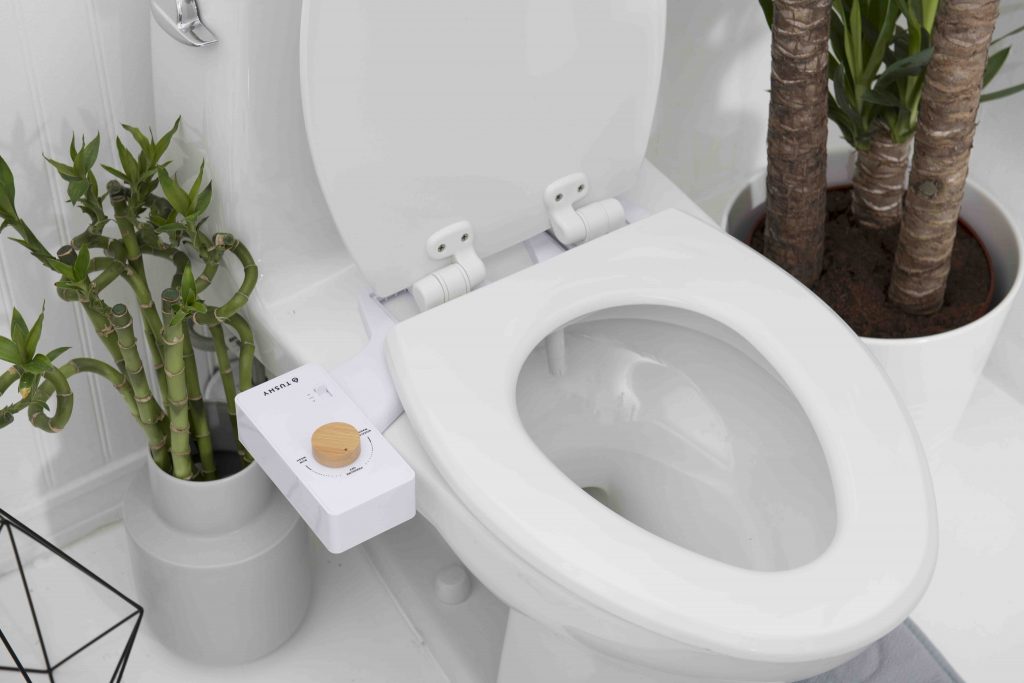
Or, Get a Bidet!
In many places around the world, bidets have been the norm for quite some time. But in the United States, they’ve only just started catching on in the past several years.
Bidets are a GREAT alternative to toilet paper. Here are some of the benefits:
- More hygienic and you get a better clean.
- Decreases the likelihood of developing hemorrhoids and anal fissures.
- Saves paper & is more eco-friendly.
- Can save you money in the long run because you don’t have to keep buying TP (or you buy less).
- It can be easier to use for seniors and people with mobility issues.
- More hygienic (and sometimes easier) for menstruating and pregnant people.
- It uses less water overall. (Even though you use more water personally, it takes an average of 37 gallons of water to produce one roll of toilet paper. So saving TP = saving water.)
- Honestly, it just feels better!
Our favorite brands are TUSHY and Omigo.
Some people still use a minimal amount of toilet paper to dry off after using a bidet. Others use cloths, and some just drip dry! No matter which way you prefer to use your bidet, you’re at the very least going to decrease your toilet paper usage (and have a cleaner bum!).
The BEST Unbleached, Chemical-Free Toilet Paper For Your Bum
So, all of that being said, what is the healthiest toilet paper (for individuals and our environment)?
We’ve separated our toilet paper recommendations into to primary categories: BETTER and BEST. The BETTER brands use more sustainable materials and are free from most chemicals, but most of them use the ECF whitening process. The BEST ones are entirely unbleached.
P.S. All the tissue below is biodegradable and septic safe too!
Here are the best non-toxic toilet paper brands:
TUSHY
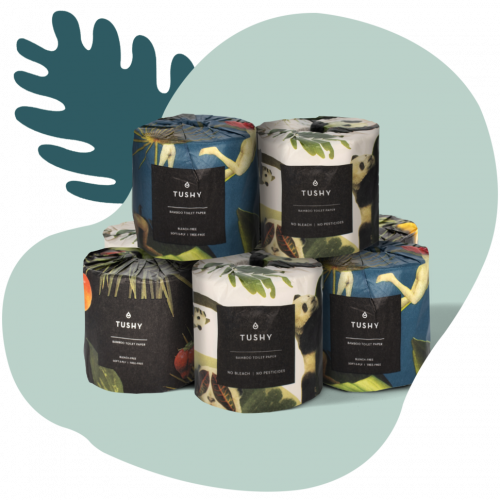
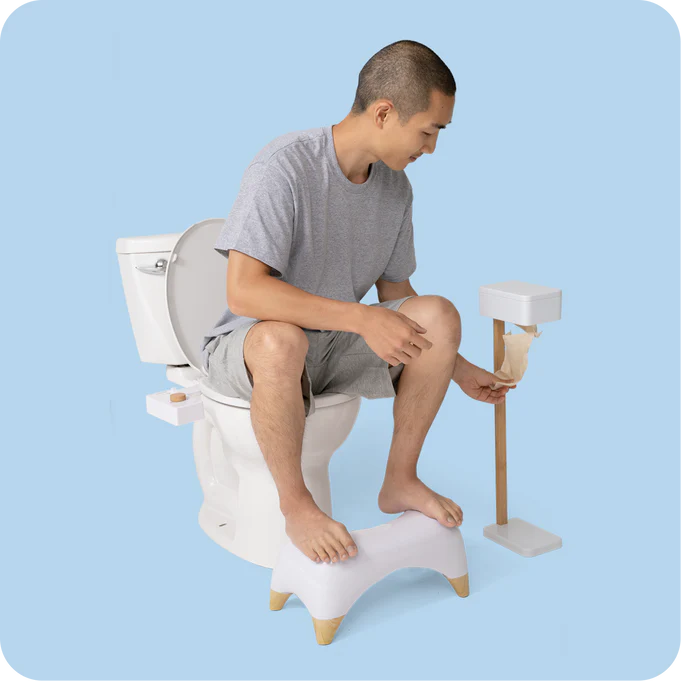
- Choose between regular rolls or squares with a stand
- 100% bamboo
- Unbleached
- Dye- and BPA-free
- Subscription model available (+ free shipping)
- Plastic-free
- Gives back to non-profits
PlantPAPER
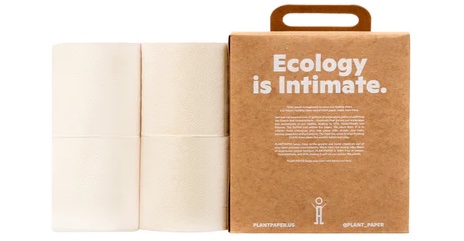
- FSC-certified bamboo
- No bleach, formaldehyde, or BPA
- Plastic-free
My review: I like that the PlantPaper comes in even less packaging than a lot of the other eco-friendly TP brands—it’s just the rolls and the cardboard box. (The rolls are not individually-packaged.)
I found the PlantPaper toilet paper rolls to be slightly softer than many of the other sustainable brands I’ve tried, but it’s not the softest TP in the world, either. I think they managed to find a good middle ground between softness and strength.
I would re-buy this one!
Eco Cheeks

- 100% FSC-certified bamboo
- unbleached
- no chlorine bleach, fragrance, inks, dyes, BPA or formaldehyde
- plastic-free
- based in Australia
- gives back to non-profit organizations
The BETTER (Mostly) Non-Toxic Toilet Paper For Your Bum
Reel

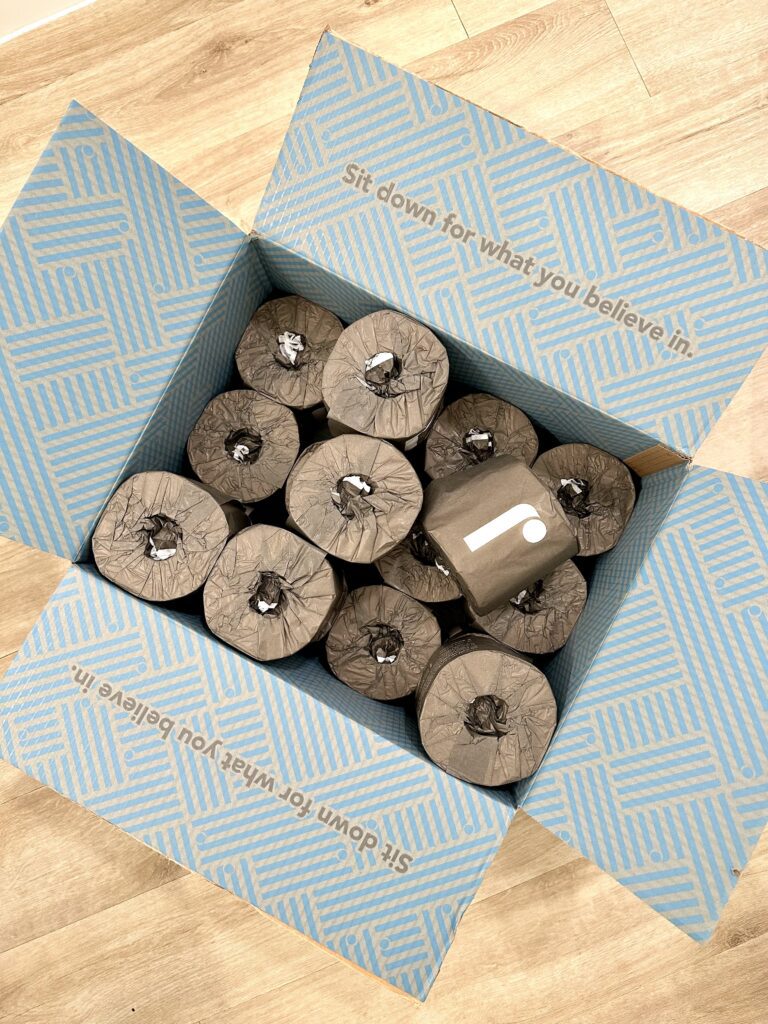
- 100% bamboo toilet paper
- Whitened using elemental chlorine-free (ECF)
- No inks, dyes, or BPA
- Plastic-free
- You can subscribe to save money
- Now available at Target!
- Gives back a portion of profits to SOIL
My review: Overall, I liked Reel! Like many of the other brands listed here, it’s not as soft as your conventional Charmin, but it didn’t cause me any discomfort or anything. (Personally, I’d rather use a slightly-less-soft TP and not have to worry about toxicants!)
I like that you can now find it in big box stores like Target. You can save on shipping and grab it quickly if you’re in a pinch. Of course, I like that it comes in plastic-free packaging as well.
I would buy Reel again.
Who Gives A Crap
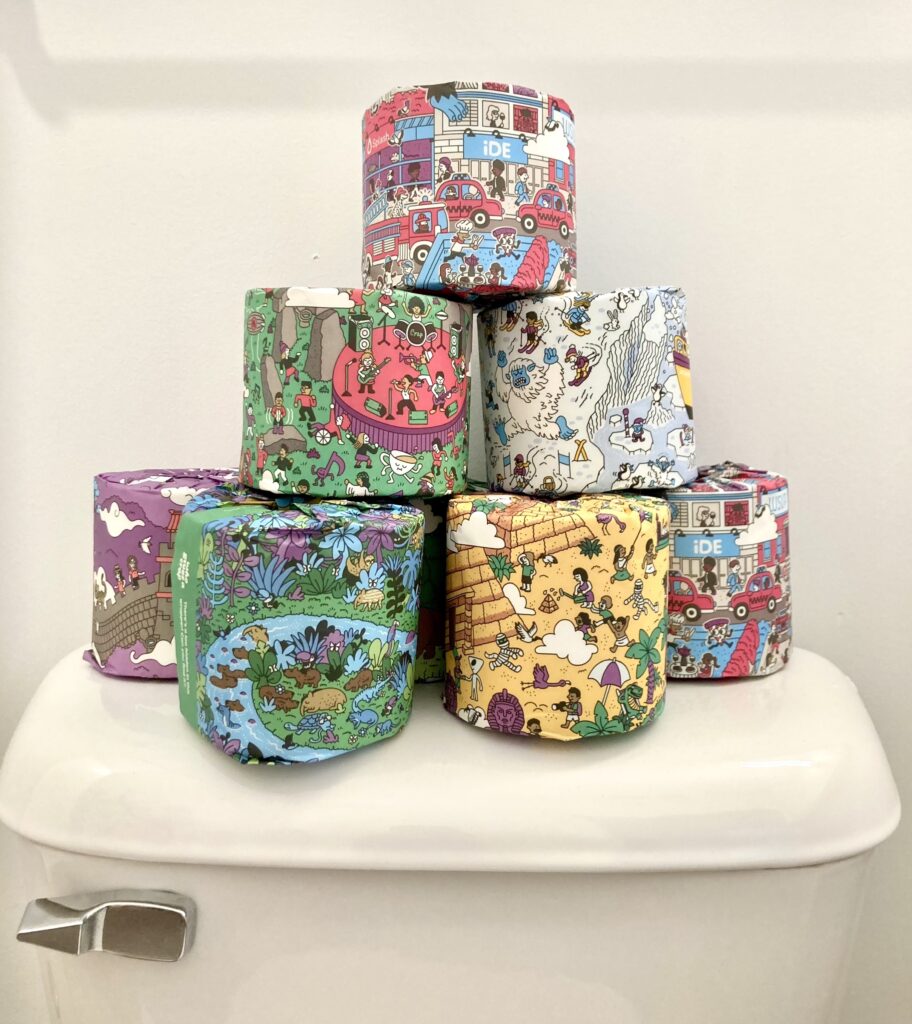

- Available in recycled paper (which uses hydrogen peroxide + oxygen to bleach and could contain bisphenols) and bamboo toilet paper (which uses TCF and hydrogen peroxide to bleach)
- Free of inks, dyes, and scents
- Plastic-free
- Subscription model available
- B Corp certified
- 50% of profits are donated to non-profit organizations
My review: I think Who Gives a Crap might be one of the strongest eco toilet paper I’ve tried. It’s not as thick as something like Charmin or Cottonelle, but again, that doesn’t really bother me! It’s definitely thicker and stronger than brands like Angel Soft and Scott. And it’s soft enough on the bum, too.
Overall, I would buy Who Gives a Crap again.
Public Goods


- Bamboo and sugarcane blend
- Free of inks, dyes, fragrances, and BPA
- Whitened using ECF method for the bamboo and TCF for the sugarcane
Cloud Paper

- 100% bamboo
- Whitened using the ECF method
- Free to BPA, scents, pesticides, and dyes
- Plastic-free
- Subscription model available
My review: I think Cloud Paper might be the softest low-tox toilet paper I’ve tried. It’s not super thick, but it’s definitely softer than some of the other brands that feel a little more paper-y! I’d buy it again.
(I will say that their facial tissues are not as soft though… That’s not a problem for me most of the year when I’m only using one or two tissues a day, but if it’s cold season and I’m using tissues all day, I could see their tissues being too irritating on my nose!)
Seedling by Grove

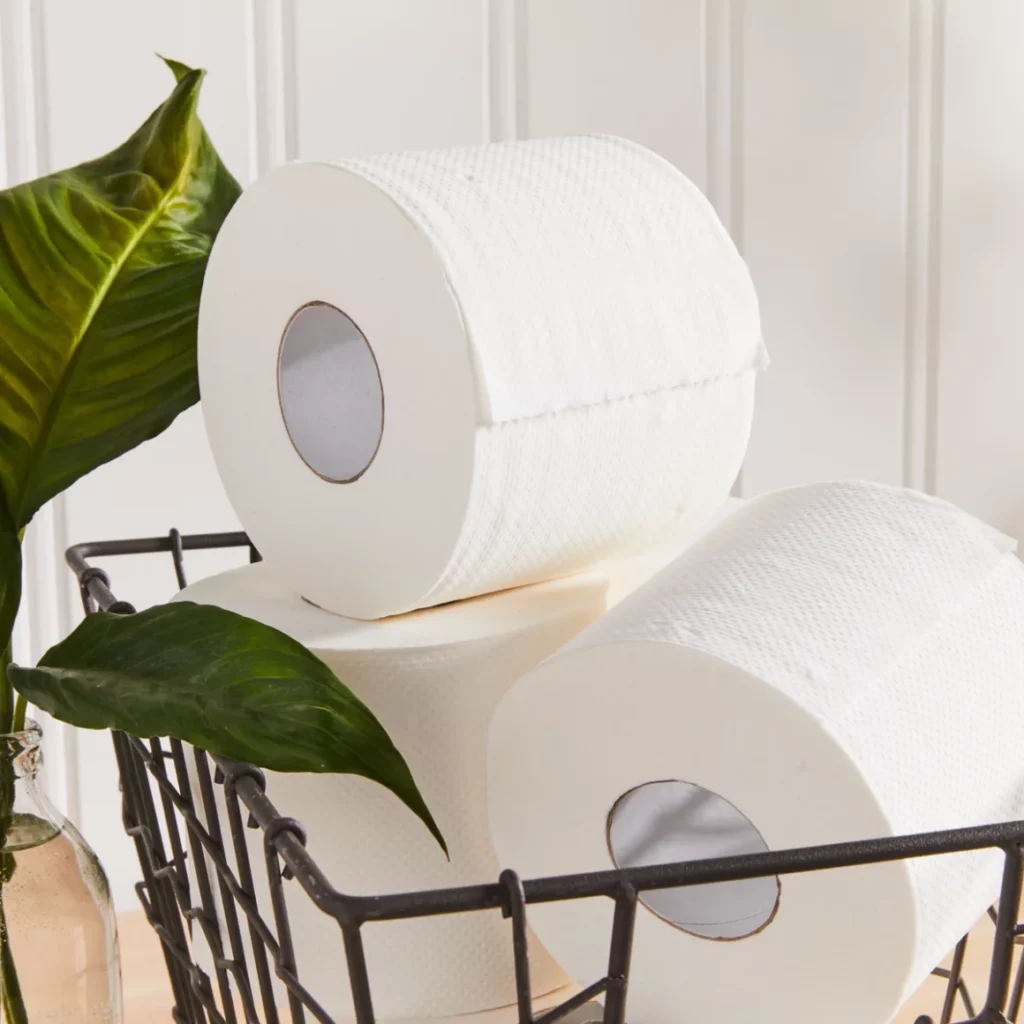
- 100% bamboo
- Whitened with ECF method
- Plastic-free
- Every purchase helps restore American forestland
- Certified B Corp brand
Caboo

- Bamboo and sugarcane
- Uses ECF method
- Non-GMO certified
- BPA- and fragrance-free
- Plastic-free
- Also available at Thrive Market
Pure Planet Club

- 100% bamboo toilet paper
- Uses ECF method
- Lint-free
- BPA-free
- Plastic-free
Bim Bam Boo


- 100% FSC and USDA BioPreferred Certified bamboo
- Uses ECF bleaching method
- Free of formaldehyde and BPA
- Plastic-free
- Subscription model available
- Give-back initiatives to non-profit organizations
Seventh Generation
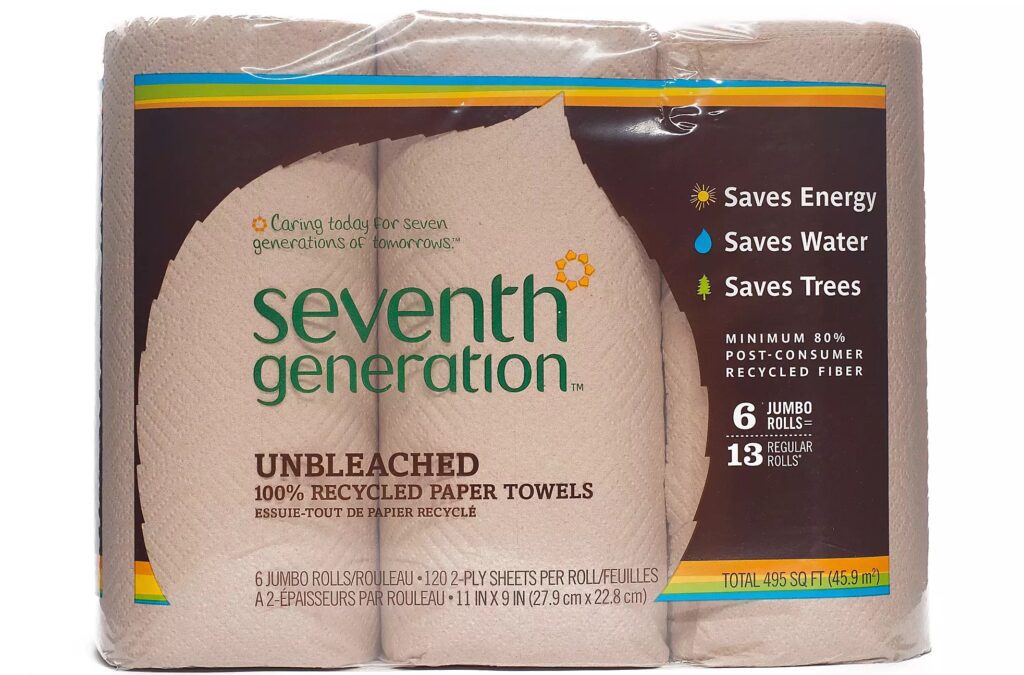
- 100% recycled (could contain bisphenols)
- Completely unbleached
- Available at many stores such as Walmart and Thrive Market
Bumboo
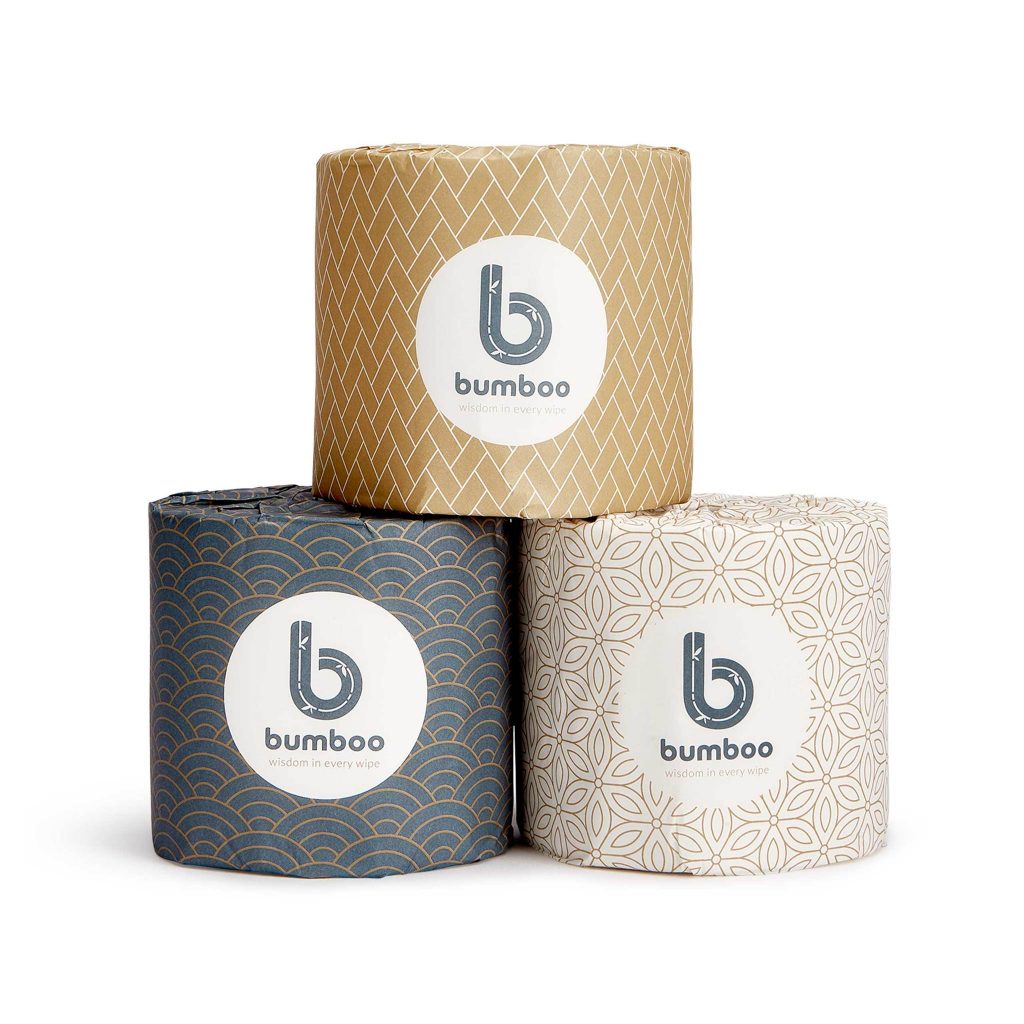
- 100% bamboo
- Whitened using a mix of oxygen and hydrogen peroxide (TCF method)
- Available wrapped or unwrapped
- One tree planted with each purchase
- Plastic-free, soy-inked packaging
- Free from pesticides, fertilizers, scents and dyes, and lint
- Subscription model available
- Based in UK
TBD On These TP Brands
Lastly, these are the brands we reached out to to request more information about their process, but we never heard back from:
Your bum will thank you when you go chemical-free with your toilet paper!
To get more product picks, low-tox lifestyle tips, and more delivered to your inbox once a week, sign up for Filtered Fridays!
Do you know why the toilet paper does not cross the road? Because it gets stuck in a crack.






Did you come across Naturez Way in your search? They seem good to me!
Hi Merrill,
Actually, I don’t think I’ve checked out NatureZway before so I appreciate you bringing them to my attention. They do look like a good option! They say they’re made from bamboo and free from chlorine. I also like how they actually publish the lab results from PFAS tests on their website for several of their other disposable dinnerware products. Maybe I’ll add them in the future!
Thank you so much for your input! 🙂
Which TP brand listed above is safe for our septic system? Thank you
Hi Noel, they are all septic safe. 🙂
What about softness. Would love to know which of the cleaner options is gentlest on the bum.
What about Emerald brand? They just told me they use hydrogen peroxide at their EFC method (?) and they use zero chemicals in their agricultural waste that is used as raw materials. Did you consider them?
Hi Jen,
We hadn’t looked at Emerald brand, but I’m looking at their “Farm to Tissue” paper towels and they look like a great option!
My Bum deserves TLC!